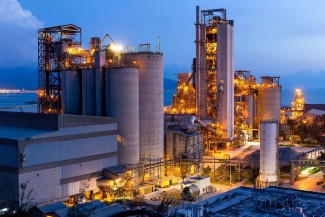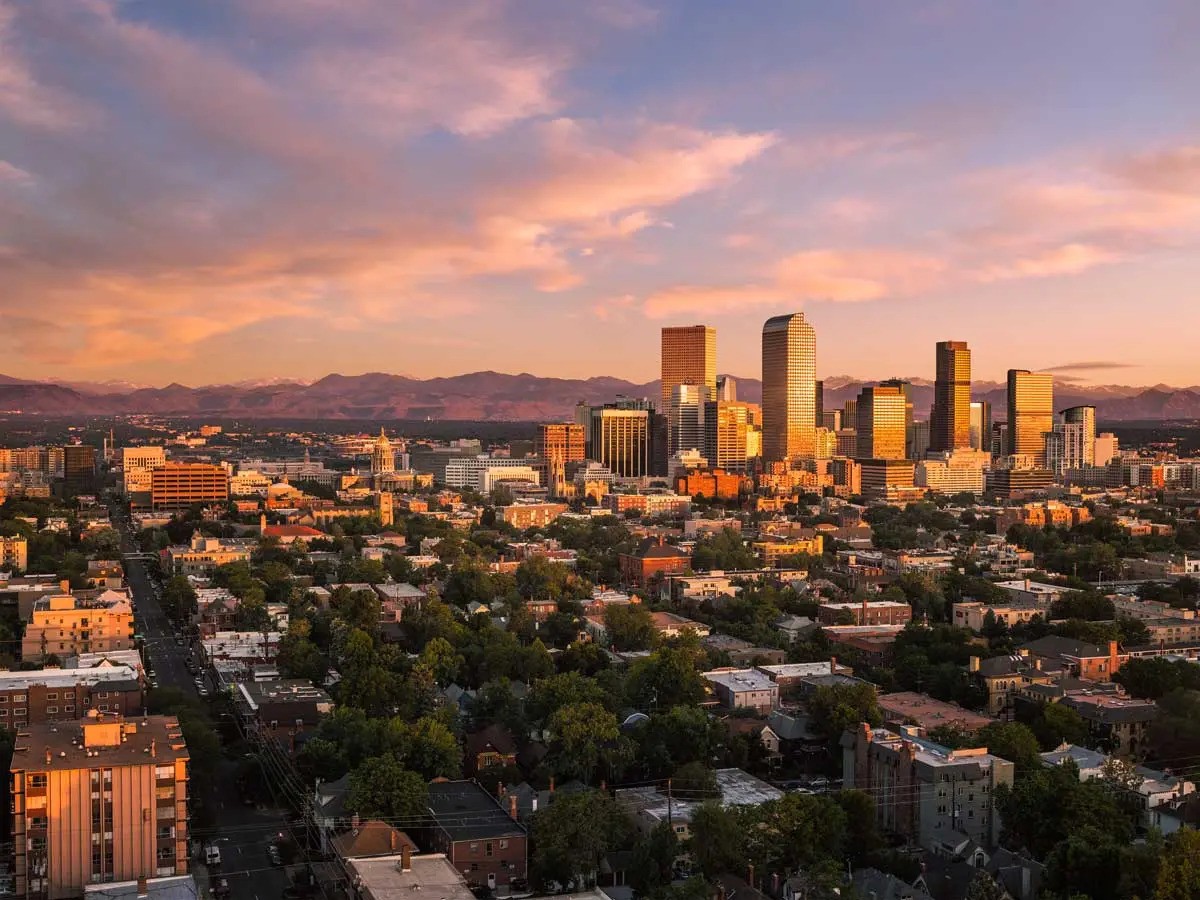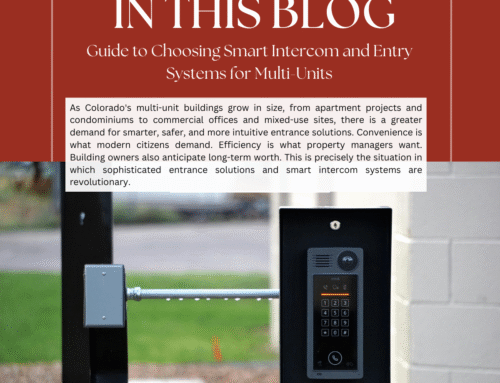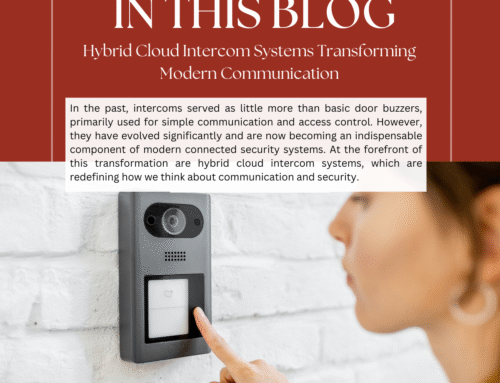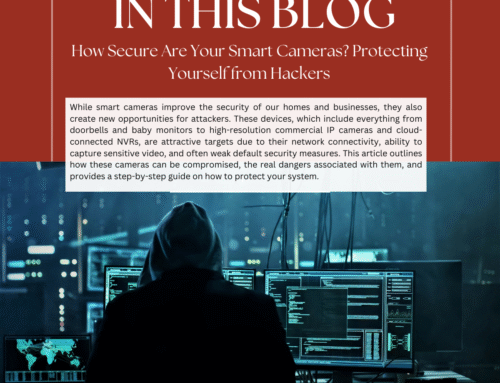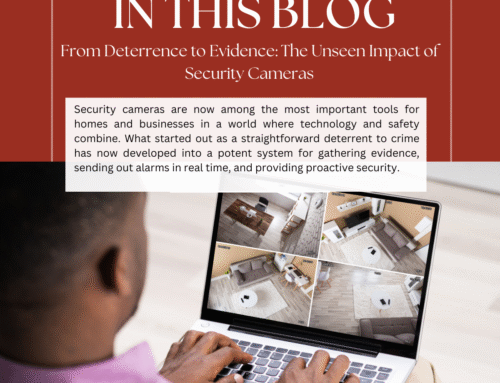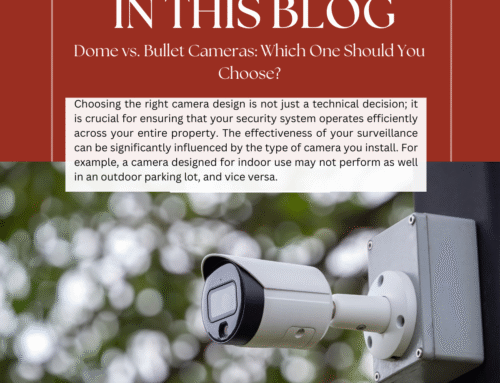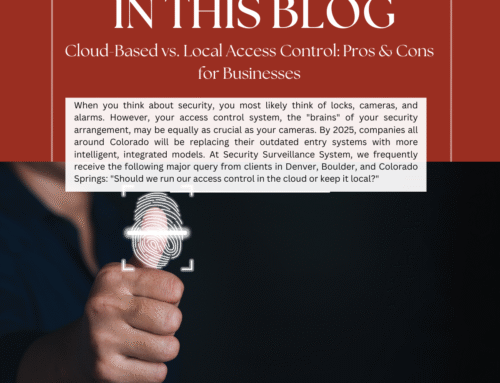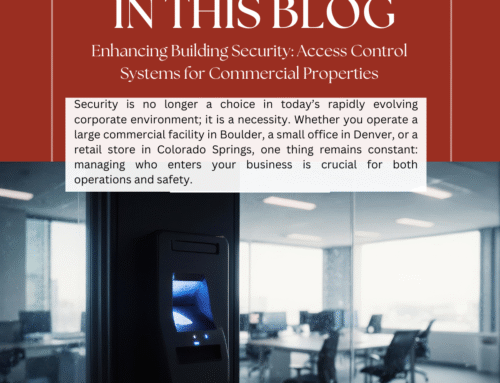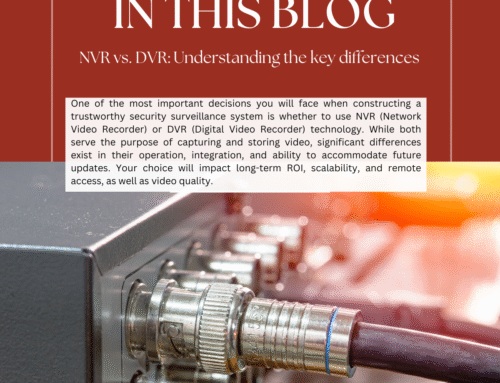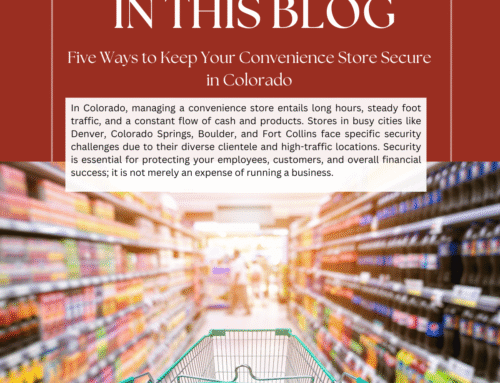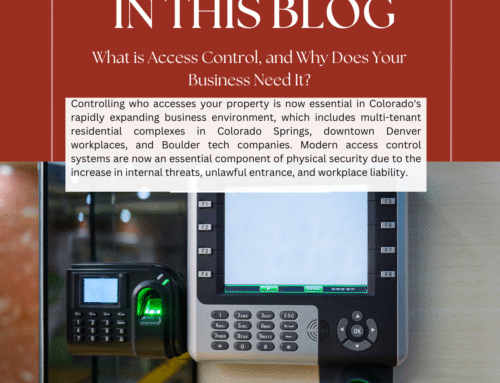Access Control vs. Surveillance: Which One Does Your Business Need
Access Control vs. Surveillance: Which One Does Your Business Need
Today’s corporate security involves more than just putting cameras and locking doors; it involves developing a thorough plan that safeguards data, people, and property. Whether you run a huge corporation, an office building, or a retail store, two technologies frequently take center stage in discussions: video surveillance systems and access control systems.
Although they have different functions, both are crucial parts of contemporary security. Which one is most necessary for your company, and how do you choose? Let’s examine the main distinctions, advantages, practical uses, and the reasons why combining the two might be your best purchase this year.
Understanding Access Control
Who can enter a building or restricted area, when they may enter, and which areas of the facility they can access are all controlled by access control systems. These systems use more intelligent, digital techniques in place of conventional keys, like
- Fobs and key cards
- PINs
- Mobile app access credentials
- Biometric readers (facial recognition or fingerprints)
Cloud-based control, real-time reporting, and full scalability are features of contemporary access control systems, such as those deployed by Security Surveillance System
The Advantages Of Access Control
- Prevent Unauthorized Access: Don’t let strangers into critical places like data centers or storage rooms.
- Instant Access Management: In just a few seconds, remotely add or delete access rights.
- Audit Trails: To ensure accountability, keep track of each entry and departure.
- Better Key Management: Get rid of the possibility of misplaced or duplicate keys.
- Integration Ready: For a cohesive configuration, just link to alarm and surveillance systems.
The growing demand for digital and biometric security solutions is expected to propel the worldwide access control market’s growth from $10.6 billion in 2025 to $15.8 billion by 2030, according to Research.
Understanding Video Surveillance
CCTV systems, also known as video surveillance systems, are designed to monitor, document, and analyze activities occurring on and around your property. These systems enhance safety and visibility while offering valuable insights into operations and helping to deter criminal behavior.
Features of Modern Surveillance Systems
- AI analytics (object, face, and behavior identification);
- Motion detection and visual perception
- AI analytics (identification of objects, faces, and behaviors)
- Options for local or cloud storage
- Live broadcasting on mobile devices
Advantages of Surveillance
- Deters Crime: It is evident that cameras deter theft, vandalism, and other wrongdoing.
- Offers Evidence: Captured video aids in legal defense and investigations.
- Keeps an eye on operations: Recognizes customer flow, employee output, and adherence to safety regulations.
- Improves Employee Safety: Real-time entrance and parking lot monitoring.
- Round-the-clock Remote Access: Maintain contact with your company when you’re away.
The next generation of intelligent monitoring is being driven by AI and analytics, and the worldwide video surveillance industry is predicted to grow to $93.5 billion by 2030.
Access Control vs. Surveillance: The Core Difference
While both surveillance and access control systems enhance a business’s security, they serve different purposes. The main goal of access control is to limit and regulate who can enter specific areas. Preventative security measures such as keycards, biometric scanners, and PIN-based systems ensure that only authorized individuals gain access. This approach is particularly effective in environments like offices, warehouses, and restricted areas where controlled access is essential. The data collected typically includes records of entry and exit.
In contrast, surveillance systems are designed to monitor and document activities either in real-time or after the fact. These systems utilize network video recorders (NVRs), cameras, and sensors to gather visual information. When actively monitored, surveillance acts as both a reactive and preventative measure, helping to identify and analyze incidents as they occur or afterwards. Access control, on the other hand, aims to prevent unauthorized entry before it happens. Surveillance is best suited for public spaces, retail establishments, and building perimeters, where continuous visibility is crucial.
In summary, surveillance focuses on observing activities after someone is present, while access control determines who can enter. Together, they form the foundation of a comprehensive security strategy for modern businesses.
When to Pick One Over the Other
Access control is necessary if:
- You oversee several staff members or divisions.
- You have sensitive areas, such as pharmacies and server rooms.
- You wish to use digital access in place of physical keys.
- Audit trails are necessary for accountability or compliance.
Surveillance is necessary if:
- You wish to keep an eye on activity and movement at all times.
- You have had issues at work, theft, or vandalism.
- You wish to enhance safety and customer service.
- Visual verification and real-time notifications are essential.
Combining both is the best practice.
The most secure companies combine the two systems.
For instance:
- Access control restricts who is allowed inside.
- Surveillance verifies who entered and what transpired.
Combining the two results in a multi-layered security approach that deters attackers and offers proof if something goes wrong.
Examples From The Industry
Shops and Storage Facilities: Use cameras to keep an eye on transactions and discourage theft, and use access control to limit access to inventory rooms and manage deliveries.
Offices of corporations: Maintain lobby camera coverage for visitor verification, assign department-based access levels, and keep track of attendance.
Campuses and Schools: Staff areas are protected by access control, while student safety is ensured via monitoring in parking lots, playgrounds, and halls.
Medical Facilities: Labs and drugs are secured by access control, while patient safety and compliance are upheld by cameras.
Hotels & Hospitality: When paired with public monitoring, digital keycards for visitors improve both safety and visitor satisfaction.
Adoption Insights and Market Research
By 2026, 51% of companies want to integrate AI and smart analytics into their physical security systems.
- For layered security, 65% of North American businesses already combine monitoring and access control.
- By combining AI analytics with surveillance systems, false alarms may be decreased by up to 70%, and incident reaction times can be shortened by 50%.
- The Security Industry Association claims that up to 30% more operational efficiency may be achieved by integrating physical security systems (access + video).
Businesses are shifting toward integrated, intelligent, and remotely managed security ecosystems, as these figures clearly demonstrate.
Innovations Based on Research
- AI-Powered Behavior Detection: New models, such as YOLOv8, may identify movement patterns or inappropriate clothing in restricted areas and provide anomalous notifications in real time.
- Cloud-based access control as a service, or ACaaS, allows for quick credential changes, software upgrades, and remote administration from any device.
- Blockchain-Enabled Surveillance: According to new study, security video may be stored on blockchain in a way that prevents tampering.
- Predictive analytics: By combining access records and video footage, security threats may be foreseen before they materialize.
Frequently Asked Questions (FAQ’s)
Q1. Is it possible to combine surveillance with access control?
Answer: Indeed! Integration makes it possible to cross-check video footage with access records, which is perfect for compliance or investigations.
Q2. Do contemporary systems use wireless technology?
Answer: Of course. Nowadays, a lot of surveillance and access control systems are wireless or hybrid, providing flexibility for both new and old facilities.
Q3. How long should a video be kept?
Answer: Depending on storage capacity and compliance, most companies retain video for 30 to 90 days.
Q4. Can the cost of insurance be reduced by these systems?
Answer: Yes, companies with confirmed security systems can receive discounts of up to 15% from several insurers.
Q5. How frequently should my systems be maintained?
Answer: Every six to twelve months, a thorough checkup guarantees that the cameras are clean, the lenses are focused, and the firmware is current.
Q6. Can hackers compromise access control systems?
Answer: Yes, as long as it’s professionally installed and secured. Make sure your provider has secure networks and multi-factor authentication.
Q7. How do analytics and AI improve security?
Answer: They assist in detecting anomalous behavior, automating notifications, and lowering the expenses associated with human monitoring converting your system from reactive to proactive.
Q8. What happens in the event of a network or power outage?
Answer: To continue operating even in the event of disruptions, systems can be outfitted with local storage and UPS backups.
Q9. Is it safe to save surveillance footage on the cloud?
Answer: Trustworthy cloud services use multi-layer authentication and encryption to store and retrieve videos securely..
Q10. How much does it cost to invest in surveillance and access control?
Answer: By reducing losses, expediting investigations, and improving employee responsibility, the majority of businesses achieve a return on investment in 12 to 24 months.
How SSS Camera Can Help
Our specialty at Security Surveillance System is creating unique, integrated security systems that, for optimal protection, incorporate video surveillance and access control.
Our knowledgeable staff provides the following services to Denver, Aurora, Boulder, Colorado Springs, and the surrounding areas:
- Commercial security systems
- CCTV and AI surveillance systems
- Cloud-based administration and remote monitoring
- Installation and configuration of access controls
- Round-the-clock system support and maintenance
Whether you need to modify an existing setup or install a new one, we’ll personalize your system to your business kind, budget, and security goals.
In conclusion
Security involves strategically using both monitoring and access control to create a comprehensive defense system; it is not about choosing one over the other.
Access control gives you authority over who is allowed entry, while monitoring enables you to anticipate future events.
When these two elements are combined, they provide exceptional security, accountability, and peace of mind. Businesses that invest in intelligent, integrated security solutions not only protect their assets but also gain operational insights, enhance trust, and realize long-term value in a time of increasing security risks and technological advancements. If you’re unsure where to start, let SSS Camera assist you. Our professionals are ready to create customized solutions to meet your security needs.

